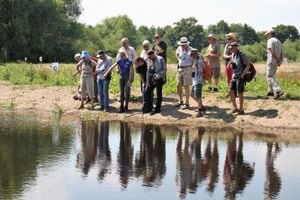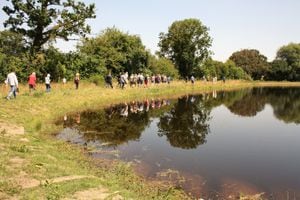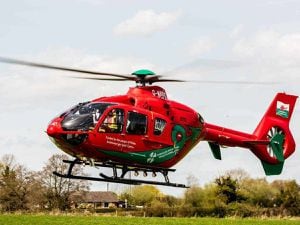Canal work unveiled to group of enthusiasts - with pictures
A group of enthusiasts were given an exclusive behind-the-scenes look at the £4 million project to restore a section of the Montgomery Canal.

The group of 30 people enjoyed guided walks to the new Aston Locks Nature Reserve, which is being created next to the canal to provide a protected home for birds, wildlife such as damselflies, dragonflies, otters and water voles, and rare aquatic plants .
Trust project manager David Hennessey and ecologists Stuart Moodie and Sara Hill explained the complex works and showed how the plants and animals were being transferred into the new nature reserve from the main line of the canal.
The whole project is being funded by the Heritage Lottery Fund (HLF) and Shropshire Wildlife Trust’s Freshwater First Programme, supported by the Montgomery Canal Partnership, and delivered by the Canal & River Trust, which cares for the Montgomery Canal and 2,000 miles of waterways in England and Wales.
Funding for the restoration programme was announced a year ago and since then good progress has been made towards upgrading nearly five miles of towpath, restoring one and a quarter miles of the canal to navigation from Maesbury to Crickheath and creating a dedicated turning point for narrowboats, known as a ‘winding hole’.
This will enable boats to return to the area for the first time since 1936 when the canal was closed.
Only around half of the canal is currently navigable but, with the help of Shropshire Union Canal Society volunteers, this latest major phase should be completed by 2020.

Canal and River Trust project manager David Hennessey said: “The Montgomery is a special canal and its restoration has required a special solution.
“The absence of boat movements over the last 80 years has allowed the man-made channel to become colonised by a wide range of rare flora and fauna.
“By creating a new three hectare wildlife habitat, we will be able to protect and conserve these species for generations to come, while enabling boats to return by excavating the main channel into a navigation again.”
The reserve features two new giant ponds which are being constructed next to the canal main line.
Specialist environmental coir matting has been laid along the pond banks, protecting the banks from erosion and enabling vegetation to establish more easily.
Each pond is being connected to the canal with an inlet and outlet channel, allowing fish and aquatic mammals to travel between the two water spaces. Due to the natural topography of the land and the high water table, the ponds have not been lined but rest on a natural bed of peat.





